By Dan Weisz
Over the past week, I’ve been doing a bit of birding at Sweetwater Wetlands and at Agua Caliente Park. It’s been very hot out but being near water in the morning helps to trick my mind into feeling a bit cooler.
At Sweetwater, a Green Heron surveyed the area from atop of a dead snag. Green Herons live in Tucson year-round near bodies of water especially where reeds and cattails exist. They are residents in wetlands. They are thick-necked with a pretty chestnut color there. The “green” is a metallic green on their back.
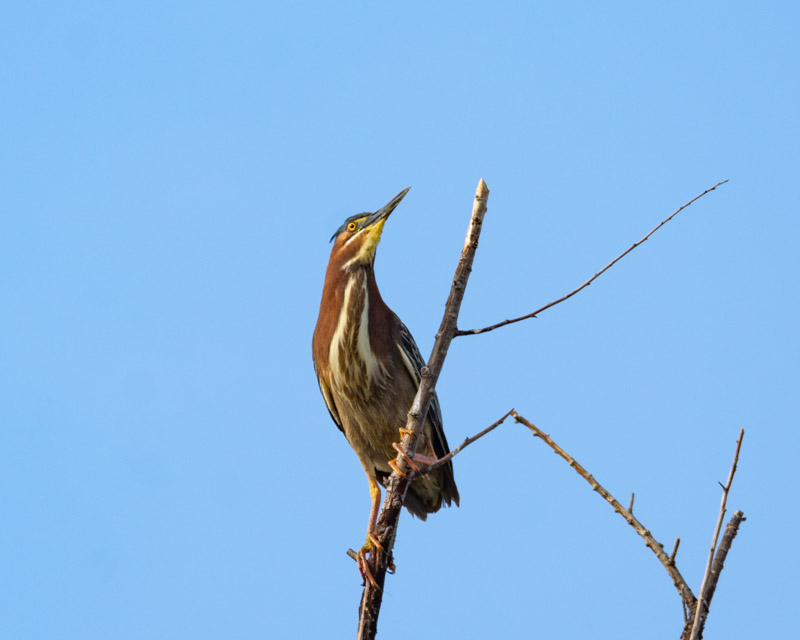
Green Herons sometimes raise their crown feathers into a crest. And that beak is a thick, powerful hunting tool.
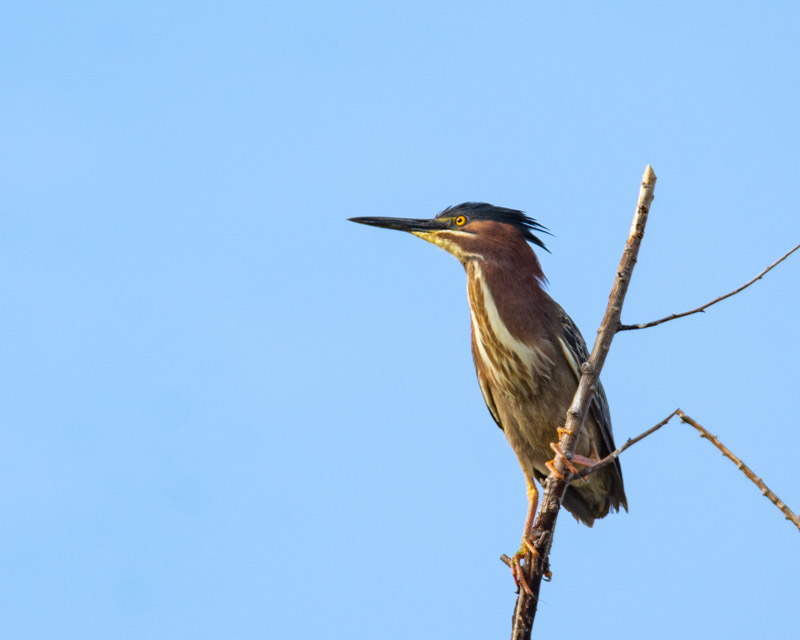
At the Sewailo Golf Course, we saw a different heron in a small creek. While similar in size and shape to the Green Heron, this is a Black-crowned Night Heron. The Black-crowned Night Heron has a thicker bill than the Green Heron. and is colored differently. The one below does not have its “black crown” yet as it is a juvenile. It was sitting patiently, probably waiting for food to float or swim by. Black-crowned Night Herons are also year-round residents of Tucson and can be found in wetland areas.
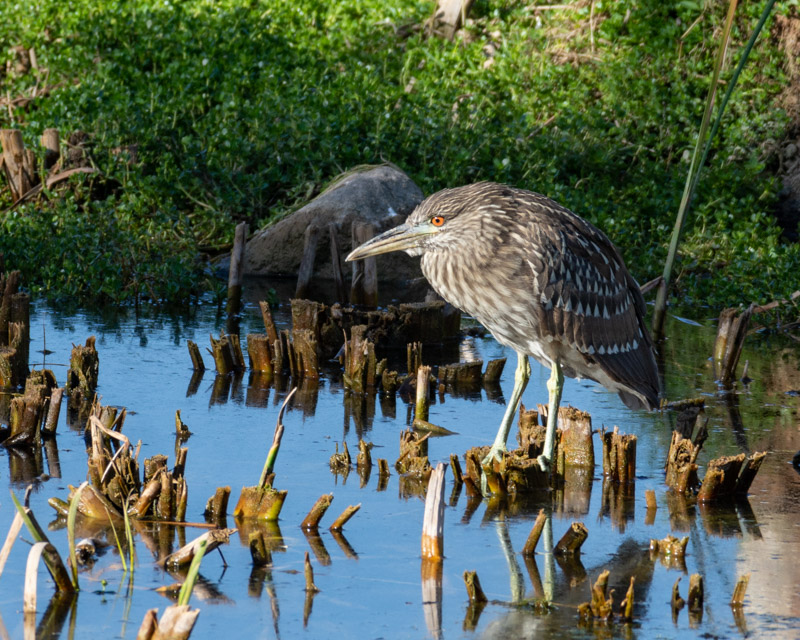
The heron below was seen at Agua Caliente Park. This Great Blue Heron is yet another permanent resident of Southern Arizona, living near permanent water. This is a big bird, approaching four feet long with a six foot wingspan. At that size though, they only weigh five or six pounds thanks in part to their hollow bones, a feature that all birds share.
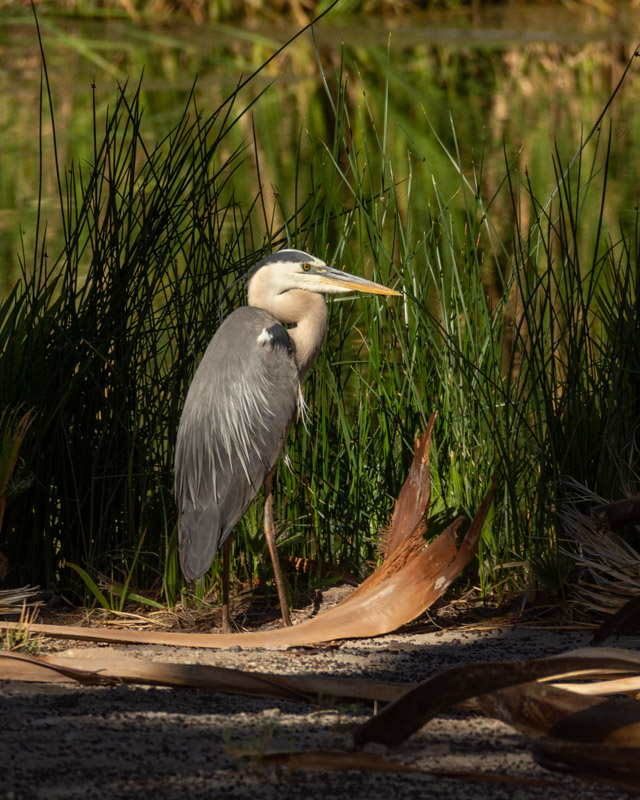
At Agua Caliente Park, a Spiny Softshell Turtle crawled out of the pond. These turtles are native to the eastern half of the United States but have been introduced throughout central and western Arizona. They are aggressive predators and can outcompete other turtles and native species for food. Spiny Softshells have a long neck and a soft, leathery shell rather than the ‘typical’ hard shell of a turtle.
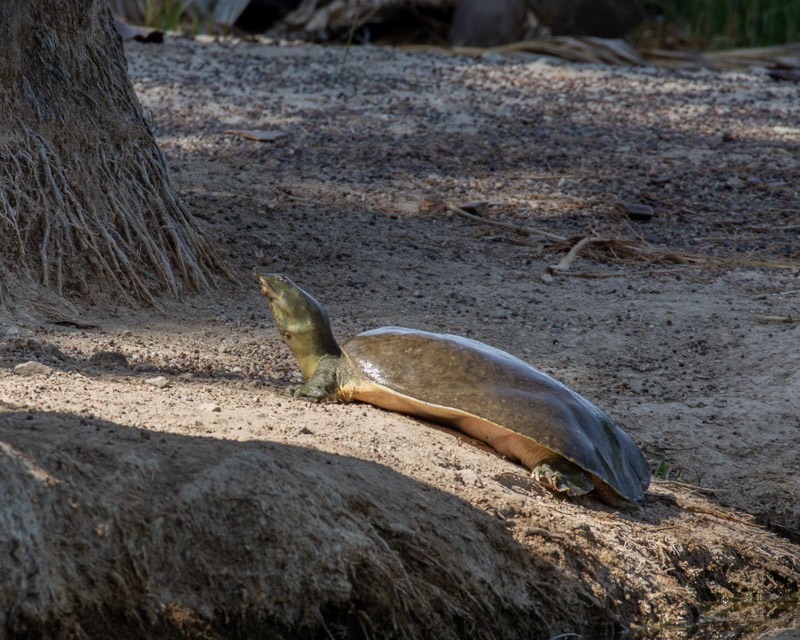
At Agua Caliente Park two weeks ago, we saw these Broad-billed Hummingbirds on the nest. Even though it was about 9:30 in the morning, it was already hot enough for all of the birds to be stressing. Mom seems to be trying to shade her little ones.
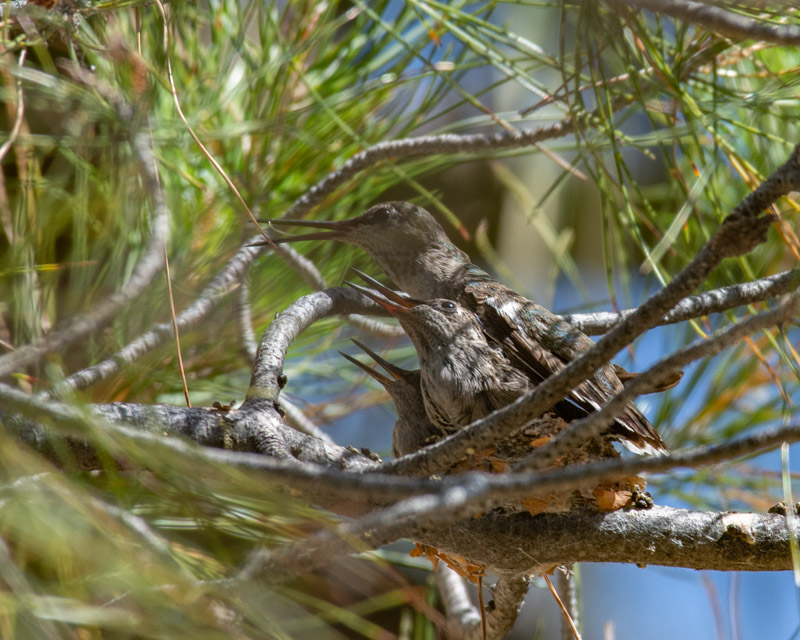
A week later and the nest was empty. We saw this young Broad-billed near where the nest had been. It’s very short break lets you know it is a juvenile whose beak will continue to grow out. This bird won’t achieve its adult plumage for another half year.
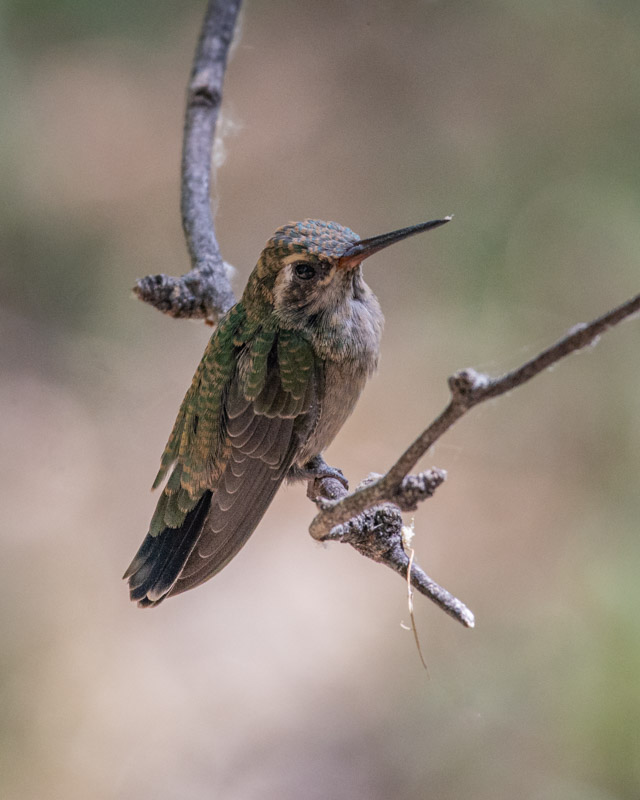
Here’s another young bird. This one was seen at the Westward Look. We heard a Northern Cardinal calling and saw it flying around the back of a mesquite tree. The cardinal youngster was sitting about six inches above a nest in the tree. It definitely is not ready to fly yet but one day will be a very pretty adult bird.
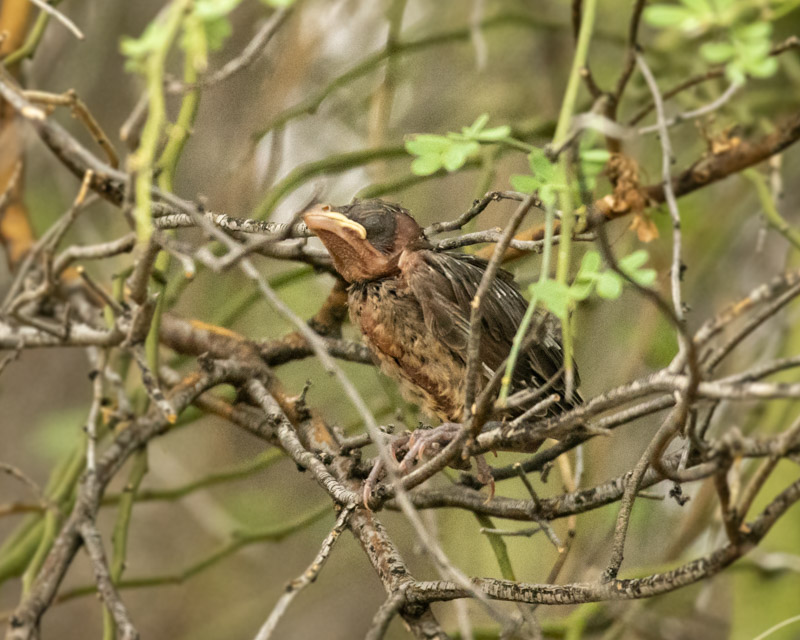
At Agua Caliente Park, several pairs of Hooded Orioles have made nests in the palm trees. When I hear the name “Hooded”, I have to think twice. Their “hood” refers to the orange/yellow color of their head, not the black face and throat. They are very pretty summer visitors- watch the palm trees near you!
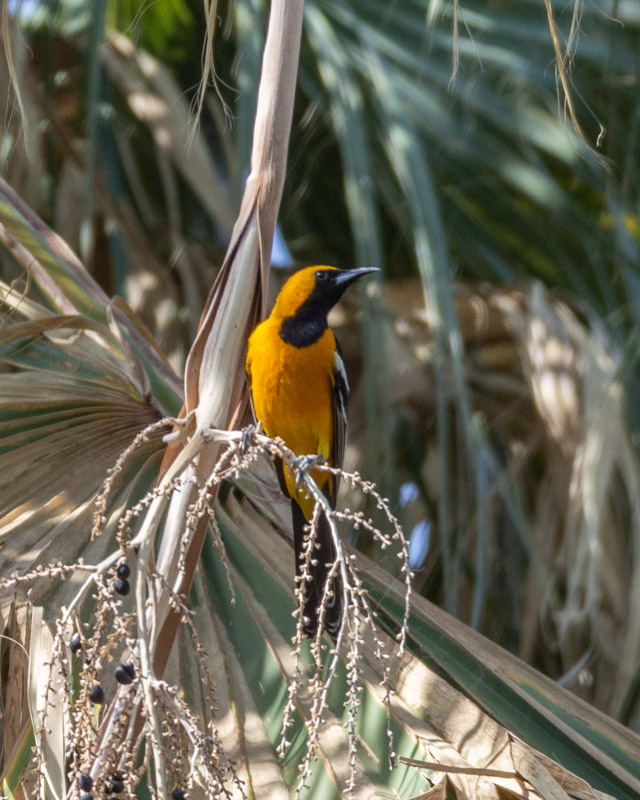
Our most common woodpecker around Tucson is the Gila Woodpecker. At Agua Caliente, this one had just caught a Giant Mesquite Bug. It held it in its beak for a few seconds before taking off to a quieter spot to dine. You may see groups of these mesquite bugs on mesquite trees in the spring. Various stages of these bugs’ nymphs are colored red, and the groups of these bugs really stand out against the bark of the trees. The bug below is an a female adult. Not sure whether the Gila Woodpecker is closing its eyelid as protection from the bug or if it is saying a little prayer before eating its meal.
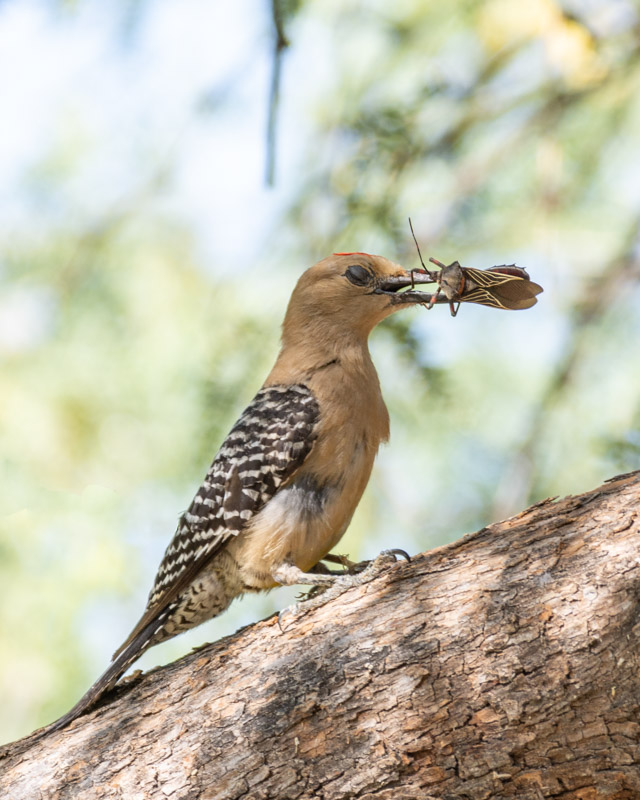
Return to Foothills Clusters Home
